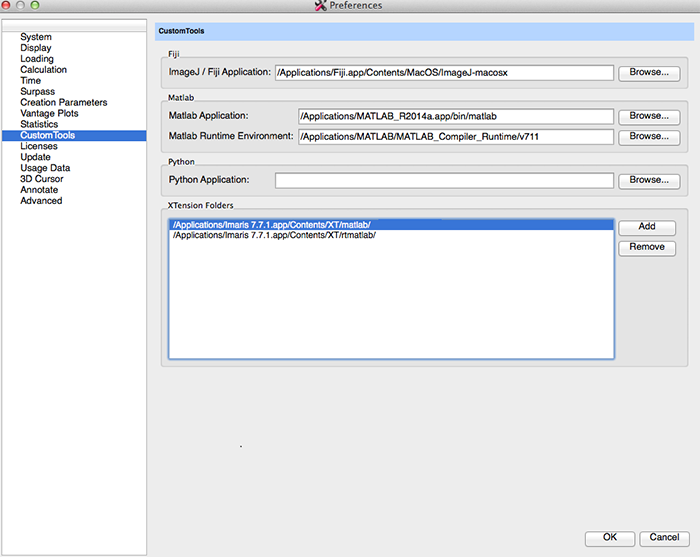

- Parallel preferences matlab 2012 software#
- Parallel preferences matlab 2012 code#
- Parallel preferences matlab 2012 series#
If you have multiple configurations, explicitly specifying the intended configuration is advised to avoid unintended consequences. You can assign default status to any of your predefined configurations by mouse click on parallel followed by selecting Set Default in the drop down menu. Click the Open button.Ī new configuration labelled SGE appears under local. In the popup window’s File Name: box, enter the file name, along with the absolute path: Now, we are ready to import the SCV-prepared SGE configuration file. The actual maximum depends on your hardware configuration.
Parallel preferences matlab 2012 software#
The maximum number of workers for local is 12 (this is a PCT software limit). Then the current default configuration, local, and the hardware maximum core count will be used. This means that if you start matlabpool with: In the Home tab, mouse click on Parallel and select the drop down menu item Manage Cluster Profiles.Īt present, local is the default configuration you can change the default configuration with parallel/set default. Katana % /usr/local/apps/matlab-2012b/bin/matlab

To create and deploy SGE in R2012b, you have to import it via the MATLAB R2012b window. It selects Katana’s batch scheduler, the Sun Grid Engine, as the batch scheduler for all MATLAB PCT applications.

For your convenience, SCV has prepared a configuration SGE. For applications requiring more than 12 workers, a user-defined configuration must be created. This configuration is suitable for PCs as well as for any single Katana node. The MATLAB pre-defined local configuration should be used for interactive or batch applications that require up to 12 workers. Which can be obtained by using MATLAB very easily.This page is intended for users who want to run MATLAB Parallel Computing Toolbox (PCT) jobs with more than 12 workers using MATLAB R2012b. Here we can see that the transfer function for the block diagram is very complex and tedious to deduce. Parallel() and series() functions according to the requirementĪnd the feedback() function for feedback. Here we use the tf() function to get the transfer function T = feedback(T2, G4, -1) %as G4 is the negative feedback
Parallel preferences matlab 2012 series#
T2 = series(T1, G3) %as T1 and G3 are in series T1 = parallel(G1, G2) %as G1 and G2 are in parallel G1 = tf(num1, den1) %Making G1 as the tranfer function
Parallel preferences matlab 2012 code#
The MATLAB code for the above problem is: Here we have to calculate C(s)/R(s), that is taken as T(s). MATLAB allows solving of such blocks directly using some functions that is being discussed below with the help of the example. The blocks connected in series, parallel and as feedbacks are at times very tedious to compute. Here we are going to study block reduction using MATLAB. But the problem with Block Diagrams is that having blocks and their feedbacks makes the transfer function on the system to tedious to calculate. Is also helps the designers to easily make amendments in the circuit for better functionality and testing purpose. Most of the circuits in Control System today are represented by simple blocks that help us understand the function of each block in a better way.


 0 kommentar(er)
0 kommentar(er)
